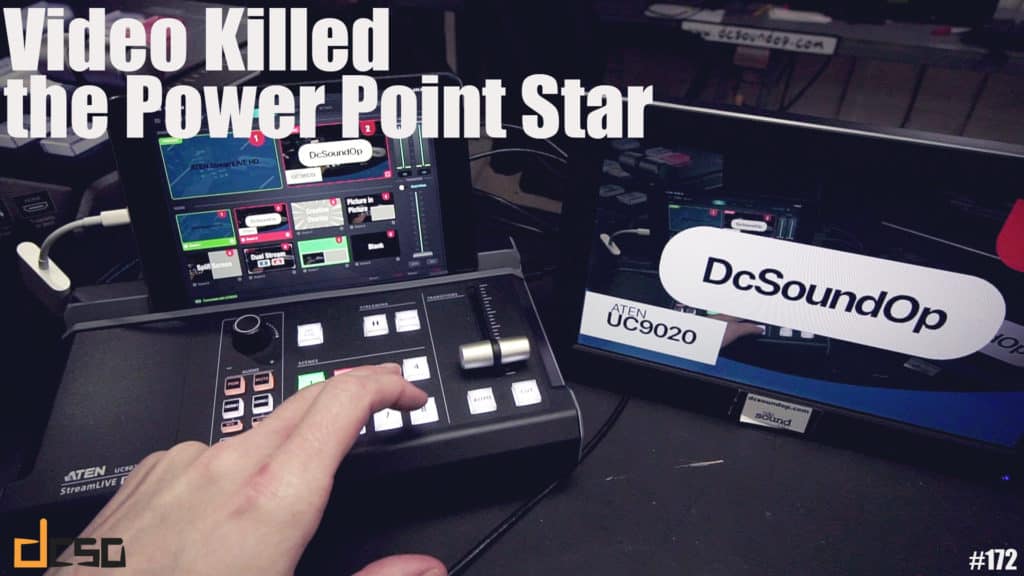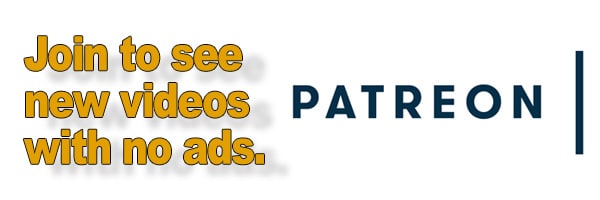As an Amazon Associate DcSoundOp earns from qualifying purchases.
Video Killed the Power Point Star
The past few weeks of isolation for everyone around the world has been an interesting time to say the least. With important work still to be done though, the race has been on to get content online and stay connected with colleagues, students & friends. It has been really impressive watching everyone jump in head first, and a great distraction getting to catch up with so many old friends reaching out for help getting things sorted.
We’ve all seen different technologies over the years chip away at the need to gather in person for various types of meetings and events, but so far it has been relatively slow going. These past weeks have seen absolutely everything you can imagine (and some things you never would have thought of) being presented online, often for free and with incredibly good production given the circumstances. So where do you start?
Click HERE to watch on Mobile

Going live on the platform of your choice can be as simple as picking up your smartphone, or as complex as shooting in a professional broadcast studio. This leaves a huge amount of middle ground for you to experiment and find your voice and style and thankfully there are tools like the UC9020 available to jumpstart the process.
While free software like the Open Broadcaster Software (OBS) is incredibly powerful, it does take some considerable hardware to put together a multi-cam streaming setup capable of doing everything an all-in-one like the UC9020 or popular Sling Studio are able to do right out of the box. All-in-one devices are never going to be the best at any one job, and many folks would caution against putting all your eggs in one technological basket on a live event. But when time is of the essence and you need to get your business or class or presentation online, you need options that work for you today.
The basics of live streaming involves a few different pieces, common to every setup regardless of price. Each piece could be an in-depth topic of its own with entire industries behind the technology we use so easily today. On larger live broadcasts, you will find specialists and often entire departments handling some of these and many other essential jobs (like lighting) while a show is on the air.
No matter the production though, we all start out by dealing with sources. Those can be live cameras, a computer playing back a file or presentation, or a microphone you’re talking into. We need to control and process those sources, requiring a mixer for audio & a way to switch and mix video sources to create a program output. We have the option here to do this in hardware, or use interfaces and capture devices to do the same job in software like OBS.
That program output which now includes audio and video needs to be encoded for transmission next. There are endless options for hardware encoders and again the same capture devices can bring a program audio and video feed into a computer together for further manipulation or software encoding.
The popular h.264 codec is currently used at the time of this video & is accepted by all major streaming platforms like YouTube or Twitch. Once we have our encoded stream, it is time to connect to an RTMP server and Go Live with your show. As the UC9020 does, hardware can stream directly to these services with no additional computer involved, which is very handy. As the need for redundancy comes up often in broadcast though, there can be dedicated computers, hardware and staff on bigger productions, just to setup, control and monitor the uplink.
Assuming your live broadcast goes well, you’d probably want a copy of the show to upload elsewhere online and maybe edit down later for other uses. You could rely on the server side recording that services like YouTube provide, but at a much lower quality than what you could record locally prior to transmission. Local recording of the program feed should be an essential part of your plan, while bigger productions will aim to record each important camera or source individually for complete control later in editing.
With that all in mind, the choice is yours as to what will best fit your needs and goals. With a little bit of careful planning and consideration, every piece of gear you buy now can be built upon in the future and used to create more complex setups.
While an all-in-one may seem like a compromise in some ways, they are a massive head start if you’re new to online streaming or video at all. In an industry where you can easily eat up a thousand dollars just on cables to connect a simple setup, you might find an all-in-one solution to be the way to get online and get back to work earning, instead of spending and thinking about streaming.
If you have questions about streaming or the UC9020 specifically, leave a comment or join us on the DcSoundOp Discord for more discussion.
Amazon and the Amazon logo are trademarks of Amazon.com, Inc, or its affiliates.
